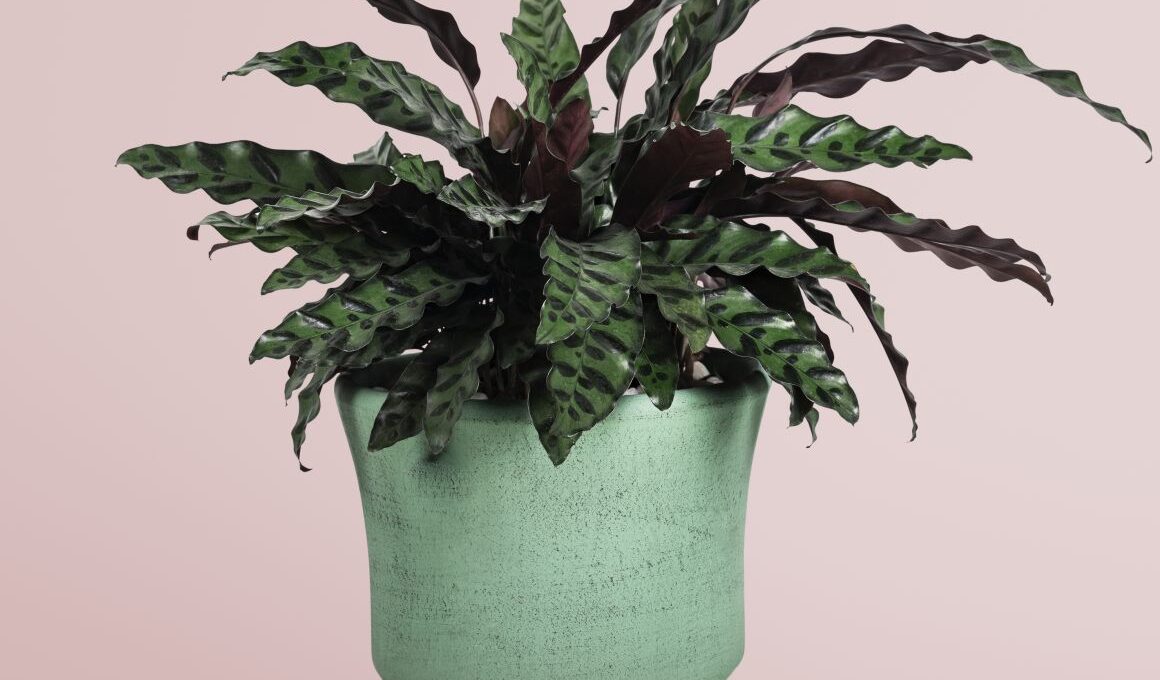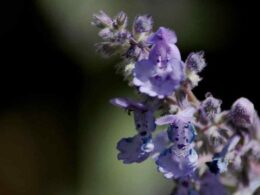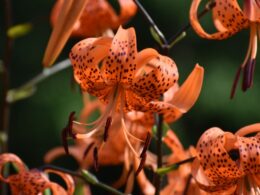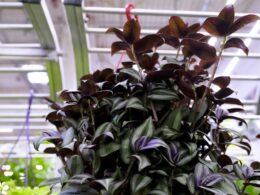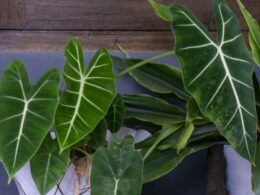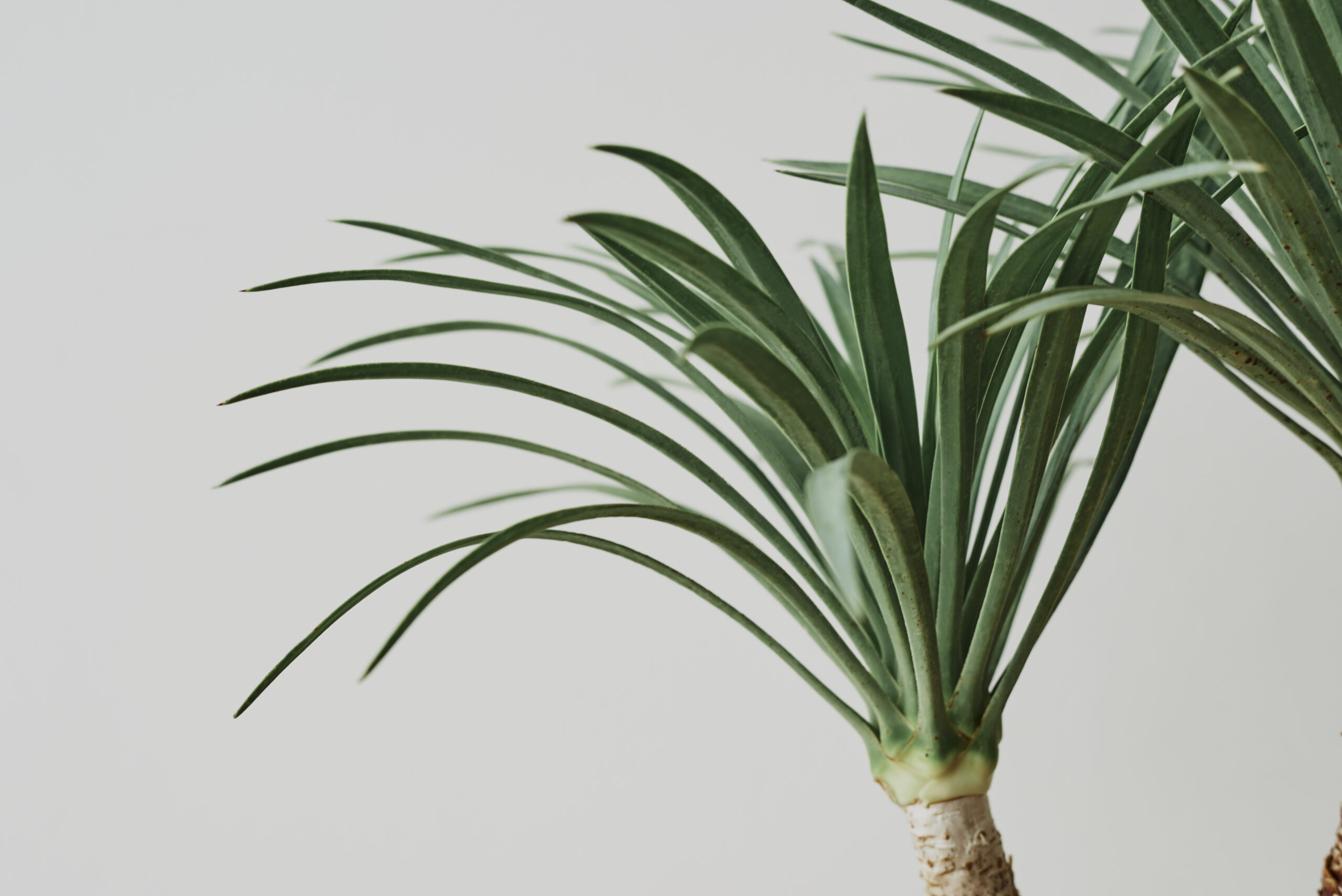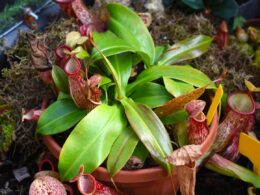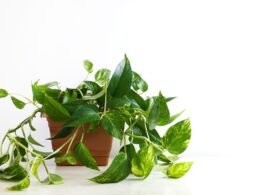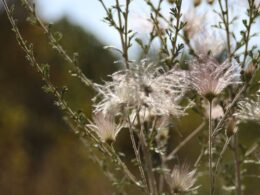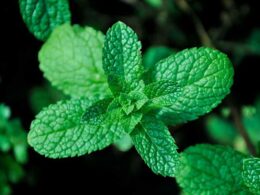Rattlesnake Plant Overview
Rattlesnake plants are native to Brazil, where they grow in the tropical rainforests. These plants are a member of the Marantaceae family, which includes other popular houseplants such as calatheas, stromanthees, and prayer plants. The rattlesnake plant gets its name from its long, lance-shaped leaves that resemble the scales of a snake. These leaves are dark green with light green stripes running down the center.
Basic Rattlesnake Plant Care
Rattlesnake plant care is relatively easy. They prefer filtered sunlight and moist soil that is well-draining. Be sure to water your rattlesnake plant regularly and keep an eye out for common problems such as browning leaves, which can be caused by too much direct sunlight or dry soil. The soil for this plant should be fertile, humus and permeable. A universal potting soil will do too.
Watering Rattlesnake Plants
Rattlesnake plants are a beautiful and unusual addition to any garden, but they can be finicky when it comes to watering. The best way to water a rattlesnake plant is to give it a good soaking once a week. Be sure to water the soil around the base of the plant, rather than spraying the leaves (although spritzing the plant in the winter is fine). If the leaves get too wet, they can develop brown spots.
Rattlesnake plants also prefer humid conditions, so misting the leaves with water can help to keep them healthy and happy. However, be careful not to overdo it, as too much moisture can lead to fungal problems. It is better to use distilled water than tap water. In general, following these simple guidelines will help you keep your rattlesnake plant happy and healthy.
Rattlesnake Leaves Movements
Have you ever noticed your rattlesnake plant moving throughout the day? The leaves of the calathea plant open and close in a rhythmic pattern that is determined by the amount of light they are exposed to. In low light conditions, the leaves will remain mostly closed, while in bright light they will open wide. This movement helps the plant to regulate its temperature and prevent water loss.
In addition, the calathea’s leaves are covered with a network of tiny veins that help to reflect light and heat. As a result, the plant is able to maintain a consistent temperature regardless of its surroundings. So the next time you see your rattlesnake plant moving, remember that it is just doing its best to stay healthy and happy.
Care Guide: Pests and Diseases
As any gardener knows, pests and diseases can quickly destroy a healthy plant. The rattlesnake plant is no exception. This tropical species is particularly susceptible to a variety of fungal diseases, including powdery mildew and root rot. Pests such as spider mites and aphids can also cause serious damage to the leaves. Fortunately, there are a few things that gardeners can do to prevent or control these problems.
Prevention tips:
- First, it is important to choose a well-drained potting mix for the plant.
- Second, water only when the soil is dry to avoid promoting fungal growth.
- Finally, regular applications of fungicide and insecticide will help to keep pests and diseases at bay.
With some TLC, fertilizers and a drainage hole in the pot, your calathea will thank you for all that proper rattlesnake plant care.
Do Rattlesnake Indoor Plants Require Direct Sunlight?
Rattlesnake plants are native to the rainforests of Brazil, where they grow in filtered sunlight. In their natural habitat, these plants receive dappled light throughout the day. When grown indoors, rattlesnake plants should be placed in a spot that receives indirect sunlight.
If you’re into rattlesnake plant care, you need to know that too much direct sunlight can cause the leaves to brown, yellow and fade. If your plant is not getting enough light, you may notice that the leaves are smaller than usual and the color is not as vibrant. If you think your rattlesnake plant needs more light, try moving it to a brighter spot or adding a grow light.
Humidity & Temperature Requirements
Calathea rattlesnake gets its common name from the markings on its leaves, which resemble the scales of a snake. This plant is a popular choice for indoor gardens thanks to its distinctive appearance and low maintenance requirements. However, there are a few things to keep in mind when caring for a calathea lancifolia.
For one, this plant prefers high humidity levels and moist soil. Never leave water laying on the pot base. It should also be placed in indirect light or filtered light, as too much direct sunlight can scorch the leaves. The ideal temperature range for Calathea lancifolia is 60-75 degrees Fahrenheit. Annual repotting is a good idea in the late summer months or in the spring.
Calathea Lancifolia Propagation
Houseplants are the hottest new commodity and calathea lancifolia propagation is all the rage. It is a relatively easy plant to propagate. One method is to take stem cuttings from an existing plant. The cuttings should be taken from new growth and should be about four inches long. Once you have taken the cuttings, you will need to place them in a pot filled with moist potting mix. Be sure to keep the cuttings warm and moist until they have rooted.
Propagating by Division
Another method of propagation is by division. This can be done by carefully removing an existing plant from its pot and dividing the root ball into two or more sections. Each section should then be replanted in its own pot. Whichever method you choose, propagation is a great way to create new plants without having to purchase them.
Quick Recap
If you are looking for an interesting and exotic plant to add to your home, the rattlesnake plant is a great option! These plants are relatively easy to care for and will add a touch of beauty and intrigue to any space. Be sure to check out our rattlesnake plant care tips and facts about this fascinating plant! Thanks for reading!





